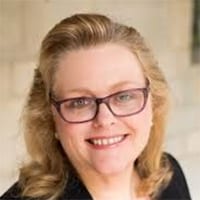Tax News You Can Use | For Professional Advisors

Jane G. Ditelberg
Director of Tax Planning, The Northern Trust Institute
Owners of closely held businesses always face the question of succession. What will happen to the business if the founder wants to retire, or if the founder becomes disabled or passes away? For situations where there is not a family member who will continue the business, the answer is some type of sale — whether to a third-party buyer or by going public in an initial public offering of stock. A downside of a sale during the founder’s lifetime is the recognition of capital gain on the sale. But the Internal Revenue Code offers those who sell their stock to an employee stock ownership plan (ESOP) a break on the capital gains tax in the form of an opportunity to defer the tax while the proceeds are invested in qualified replacement property (QRP).
What is an ESOP?
An ESOP is a type of defined contribution employee benefit plan, in which employees’ accounts are credited with the value of shares of stock in the company. In a typical transaction, the company creates the plan and buys stock back from the founder(s) to fund the plan. The stock purchase usually is funded in part with bank financing and in part through installment payments on a note carried back by the founder whose shares were sold. The employee/participant receives the value of their account when they retire or otherwise leave employment.
Why sell to an ESOP?
As an incentive to encourage sales to ESOPs, the tax code offers the seller the option to elect to defer the capital gain on the sale by carrying over the founder’s basis in the stock they sold to the QRP. This is referred to as a “section 1042 election.” Gain will be recognized when the replacement property is sold, but if the founder holds that replacement property until death, there is the possibility of a step-up in basis at the founder’s death that would wipe out the gain from the original transaction.
Which sales are eligible for a section 1042 election?
In order for the sale to qualify for the gain deferral, it must meet the following requirements:
- The company must be a domestic C corporation;
- The shares sold cannot be publicly traded;
- The stock sold must be the company’s common stock with the greatest dividend rate and voting power;
- The ESOP must own at least 30% of the company immediately after the purchase;
- The seller must have held the shares for at least three years;
- The seller must file the necessary 1042 election with the IRS;
- The seller must reinvest the proceeds in QRP no later than 12 months following the sale to the ESOP; and
- The seller (if they remain employed by the company), certain family members, and other employees who own more than 25% of the stock in the company are precluded from receiving any allocation of the shares subject to the section 1042 election under the ESOP.
What constitutes qualified replacement property?
The qualified replacement property must be securities issued by a domestic operating corporation. This treatment is not available if the proceeds are reinvested in mutual funds, ETFs, government bonds, CDs, bank deposits, securities in foreign companies, securities in holding companies, or interests in partnerships or LLCs. The proceeds also cannot be held in cash after the 12-month limit.
How does a seller make the 1042 election?
The election of 1042 treatment must be made on the selling shareholder’s tax return, including a statement of election by the seller; a statement of consent signed by the company; and a statement of purchase outlining the qualified replacement property. These must be signed by the electing shareholder, notarized, and filed by the selling shareholder no later than the due date for the taxpayer’s income tax return for the relevant tax year (including extensions).
How does this work in practice?
Let’s look at an example. Fran and Fred founded their architecture firm, FAFA, in 1995 as a C corporation organized under the Delaware law, with each contributing $100,000 in exchange for 50 shares of common stock. Over the years, FAFA has grown to a $15,000,000 business with 100 employees. At 65, Fran is thinking about retiring. The partners do not have a buy-sell agreement, and Fred is evaluating his own retirement plans and is not looking to buy Fran out. The firm has a number of capable younger professionals but there is not a single clear successor.
FAFA’s attorney suggests that the company create an ESOP, and that Fran sell all or a significant portion of her shares to the ESOP. Fred will continue to manage the company, but the ESOP will be a ready buyer for his shares if he retires, becomes disabled, or dies while still owning his shares. Fran is enthusiastic but has some concerns about incurring $7,000,000 or more in capital gains in a single year, which would leave her with fewer proceeds to invest for retirement and would push her into the highest bracket of surcharge on her Medicare parts B and D premiums after she retires.
If Fran sells 30 shares to the ESOP, she can make a 1042 election and defer the gain on the sale if she reinvests the money in a portfolio of QRP. Fran’s basis in the QRP would be a total of $60,000 allocated across the portfolio. Fran could then decide to sell the QRP in tranches to spread the capital gain out over multiple tax years, or she could decide to retain the QRP indefinitely. If she held the property until her death, under current law she would receive a step up in basis at death to the fair market value of such assets on the date of her death, after which time her beneficiaries could sell the QRP without incurring capital gain.
Assuming that Fran resides in a state that does not have a state level income tax, you can compare the income tax consequences of not making an election; making an election and selling the QRP in 20 equal shares over 20 years; and making an election and holding the property until death, assuming Fran invests in QRP with a stable value:
Net Sales Proceeds of QRP
Frequently Asked Questions:
- What if Fran did not want to sell 30 shares, but Fred and Fran each wanted to sell 15 shares? It is possible to aggregate the sales of multiple shareholders to reach the 30% of the company’s stock that the ESOP must own.
- What if the company could not afford to pay up front for Fran’s shares, and wanted to buy using an installment sale? Unfortunately, because the QRP has to be acquired no later than 12 months after the sale date, proceeds received more than 12 months after the sale are not eligible for 1042 treatment.
- What if Fran wanted to elect 1042 treatment for only part of the proceeds? The simplest way to do that is to elect 1042 for the proceeds and then immediately liquidate some of the QRP when Fran is ready to access cash.
What happens after the sale?
For most business owners, a sale that does not result in liquidity will not accomplish their financial goals. This will depend on their other assets, such as retirement accounts, as well as whether they are continuing to earn salary or consulting fees. For those who need liquidity from the proceeds, there are a number of options that can be pursued in selecting and managing the QRP.
- Investing in equities as QRP, and then harvesting capital gains strategically can be a tax efficient way to generate liquidity in some cases, because long-term capital gains generally have the lowest income tax burden, and because equities tend to be an inflation hedge.
- Investing in QRP that generates income, such as high-quality bonds or dividend paying equities. These can provide a steady income stream, although interest and dividends are taxable at the highest marginal rate.
- Borrowing against the QRP to generate liquidity, or to invest in assets that generate liquidity more tax-efficiently, is also an option. For example, tax-exempt bonds and variable annuities are not eligible as QRP, but the proceeds of a loan secured by the QRP can be invested in these types of assets to generate a stream of income. The caveats with borrowing are:
- Higher collateral ratios are needed to support loans secured by equities than ones secured by more stable assets. If you plan to borrow to create liquidity, this will impact your choice of QRP.
- Fixed income portfolios may not match inflation over the long term.
- Annuities carry higher expense ratios than other investments, and investors typically exchange certainty of income stream for lower rates of return.
If you have questions about whether an ESOP might be a solution for your business succession plan, contact your Northern Trust advisor.








